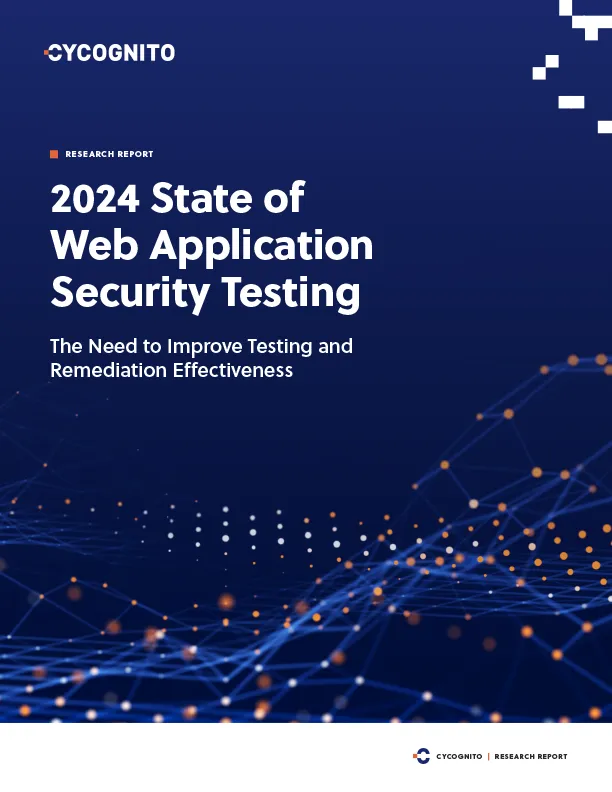What Is API Security Testing?
API security testing focuses on evaluating the security mechanisms of application programming interfaces (APIs). Security testing can identify vulnerabilities that could lead to unauthorized access, injection attacks, or even compromise of an entire API and its underlying infrastructure.
The goal of API security testing is to ensure that APIs are secure, authenticated, and able to handle malicious requests or attacks. By simulating various attack scenarios, testers aim to discover potential weaknesses within the API’s design, implementation, or underlying systems.
Why Is API Security Testing Important?
APIs are often the main channel through which services communicate and exchange data. As the bridge between different software applications, APIs are attractive targets for attackers. Security lapses in APIs can expose sensitive data, allow unauthorized access to systems, and facilitate various types of attacks, highlighting the necessity of rigorous testing.
With the increasing integration of APIs in software applications, ensuring their security is crucial for protecting sensitive information and maintaining system integrity. Through comprehensive testing, organizations can avoid potential security incidents that could lead to significant financial and reputational damage.
8 API Security Testing Methods
There are several approaches used to test the security of APIs.
1. Static Application Security Testing (SAST)
Static Application Security Testing (SAST) examines the source code of an API without executing it. This type of testing identifies vulnerabilities by analyzing code at rest for patterns or coding errors that indicate security flaws.
SAST is beneficial early in the development process, allowing developers to detect and rectify security issues before the application is deployed. SAST tools are designed to be integrated into the development environment, offering immediate feedback to developers.
2. Dynamic Application Security Testing (DAST)
Dynamic Application Security Testing (DAST) analyzes a running API to find vulnerabilities that might be exploited. Unlike SAST, DAST interacts with the API from the outside, simulating attacks against the API’s endpoints and analyzing the responses to identify potential security issues. This method helps identify runtime issues that static analysis might miss.
DAST is particularly effective for detecting issues like SQL injection, cross-site scripting (XSS), and authentication flaws. By emulating the actions of an attacker, DAST provides insights into vulnerabilities that could be exploited once the API is in production.
3. Interactive Application Security Testing (IAST)
Interactive Application Security Testing (IAST) combines aspects of SAST and DAST by analyzing applications from within during runtime. IAST tools are deployed within the application or runtime environment, allowing them to monitor the application’s performance and detect issues as the application interacts with data and users. By providing real-time feedback, IAST aids in the quick identification and remediation of complex security issues.
4. Runtime Application Self-Protection (RASP)
Runtime Application Self-Protection (RASP) involves integrating security measures within an application to detect and mitigate attacks in real time. Unlike traditional testing methods, RASP actively monitors the application for malicious inputs or behavior, taking immediate action to prevent exploitation of vulnerabilities.
RASP enhances API security by offering protection during the application’s operation. It not only identifies attacks but also automatically responds to them, significantly reducing the potential impact of security breaches.
5. Software Composition Analysis (SCA)
Software Composition Analysis (SCA) focuses on identifying vulnerabilities within third-party components and libraries used by an API. SCA tools scan an application’s dependencies to detect known vulnerabilities and licensing issues, providing insights into potential risks associated with external code.
Many APIs rely heavily on open-source components, and so SCA is vital for ensuring the security of an API’s external dependencies.
6. Fuzz Testing (Fuzzing)
Fuzz testing, or fuzzing, involves feeding an API with invalid, unexpected, or random data to identify coding errors and security loopholes. This testing method is useful for uncovering vulnerabilities that could lead to crashes, memory leaks, or potential exploits within an API.
Fuzzing simulates attack scenarios that might not be covered by other testing methods, providing a unique perspective on an API’s resilience to abnormal inputs. It helps ensure the application can handle unexpected or malicious data gracefully.
7. Penetration Testing
Penetration testing simulates real-world attacks to identify vulnerabilities in an API. Unlike automated testing methods, penetration testing involves manual processes conducted by security experts who leverage their knowledge and experience to mimic the strategies employed by attackers.
Penetration tests provide a comprehensive assessment of an API’s security posture, identifying weaknesses that automated tools might overlook. They offer deeper insights into how an API could be exploited and can provide unique insights and recommendations by human experts.
8. API Security Posture Assessment
A security posture assessment evaluates an organization’s overall API security strategy, identifying strengths and weaknesses. This holistic approach examines not only the APIs themselves but also the context in which they operate, including policies, procedures, and the surrounding infrastructure.
By offering a comprehensive view of an organization’s API security measures, posture assessments guide strategic improvements, ensuring that security practices align with the organization’s objectives and the evolving threat landscape.
Tips from the Expert

Dima Potekhin, CTO and Co-Founder of CyCognito, is an expert in mass-scale data analysis and security. He is an autodidact who has been coding since the age of nine and holds four patents that include processes for large content delivery networks (CDNs) and internet-scale infrastructure.
In my experience, here are tips that can help you better secure and test your APIs:
- Implement continuous integration (CI) pipelines with security checks: Integrate API security testing tools into your CI/CD pipelines to automatically scan for vulnerabilities during every code commit. This ensures that security testing is continuous and keeps pace with development changes.
- Automate OAuth and token-based authentication testing: Regularly test your API’s OAuth implementation and token management for vulnerabilities like token leakage or misconfigurations. Use tools to simulate various scenarios such as token expiration and revocation.
- Regularly audit third-party APIs: If your API integrates with third-party APIs, regularly audit their security practices and compliance status. Any compromise in a third-party API can have cascading effects on your API’s security.
- Isolate sensitive operations in separate microservices: For critical functionalities like payment processing or personal data management, isolate them into separate microservices with strict access controls. This reduces the blast radius in case of a compromise.
- Monitor API schemas for unauthorized changes: Implement tools to monitor your API schemas for unauthorized changes. Any unexpected modification can indicate a potential security breach or misconfiguration that needs immediate attention.

2024 State of Web Application Security Testing
Are you confident your web application security measures are keeping pace with evolving threats?
Discover how your web app security compares. Learn about average testing frequency, the prevalence of web application security incidents and breaches, and the increasing adoption of automation to improve testing efficiency.

What Are API Security Testing Tools?
API security testing tools are software solutions designed to automate the process of identifying vulnerabilities within APIs. They range from scanners that detect common security issues to complex tool suites that offer in-depth analysis and reporting capabilities. Many of these tools are not specific to APIs—they might be application security solutions that provide API testing capabilities.
By leveraging these tools, organizations can efficiently evaluate the security of their APIs, reducing the risk of attacks and data breaches. Integrating tools into the development and testing workflows helps ensure continuous security assessment and improvement.
Which API Testing Category Is Right for You?
Choosing the right API security testing category depends on several factors. Here are key considerations to help you select the most appropriate API security testing tool:
Consider the development stage:
- Early development: If your API is in the early stages of development, Static Application Security Testing (SAST) is highly recommended. It helps identify vulnerabilities in the source code before the application is executed or deployed.
- Pre-production: Dynamic Application Security Testing (DAST) and Interactive Application Security Testing (IAST) are suitable for APIs in the later stages of development or pre-production. These tests provide insights into runtime issues and vulnerabilities that are not apparent in the static code. In addition, penetration testing provides a realistic test of pre-production APIs before release.
- Post-production: For APIs already in production, Runtime Application Self-Protection (RASP) is effective in identifying and mitigating real-time threats, while DAST can be used to identify vulnerabilities and misconfigurations that manifest in production environments.
Understand API complexity and external dependencies:
- Complex APIs with external dependencies: Software Composition Analysis (SCA) is crucial for APIs that rely on third-party components and libraries, helping to identify vulnerabilities within these external dependencies.
- High level of customization: For highly complex and customized APIs, Penetration Testing conducted by skilled testers can uncover unique vulnerabilities that automated tools might miss.
Consider specific risks and threats to the API:
- For APIs prone to abuse: Implement rate limiting and conduct fuzz testing to ensure your API can handle unexpected or malicious inputs and is not vulnerable to Denial-of-Service (DoS) attacks.
- Highly sensitive or critical APIs: Conduct comprehensive API Security Posture Assessments to understand and fortify your overall API security strategy, especially for APIs that handle sensitive data or are critical to your business operations.
Assess your organizational capabilities:
- Resource availability: Automated testing tools like SAST, DAST, and IAST can significantly reduce the manual effort required for security testing, making them suitable for organizations with limited security personnel.
- Expertise and organizational structure: Using security tools like SAST, DAST, and SCA in the development lifecycle requires in-house security expertise, and also necessitates collaboration with development teams in a DevSecOps approach.
API Security Testing Best Practices
Here are some of the recommended measures for implementing API security testing.
Perform Security Testing Early in the Software Development Cycle
Integrating security testing early in the software development cycle is essential for identifying and mitigating vulnerabilities before they become entrenched in the codebase. This practice, often part of a DevSecOps approach, allows for the continuous assessment of security risks throughout the development process.
By using tools like SAST, teams can analyze source code for potential security issues in real-time, providing immediate feedback to developers. Early detection leads to simpler and more cost-effective resolutions, reducing the likelihood of security flaws persisting into later stages of development or deployment.
Validate Authentication and Authorization
Validating authentication and authorization mechanisms is crucial to ensure that only legitimate users can access your API. To validate authentication, you should test the API’s response to various scenarios, including invalid credentials, expired tokens, and requests with no authentication information.
DAST tools can simulate these scenarios to assess how well the API enforces authentication requirements. Additionally, testing should include verifying that the authentication process is secure and cannot be bypassed or compromised through common vulnerabilities like injection attacks or session hijacking.
For authorization, testing should confirm that the API correctly implements permissions and access controls. This involves verifying that users can only access resources and perform actions according to their assigned permissions. Testing should include attempts to access or modify resources using different user accounts with varying levels of privileges, ensuring that the API enforces these restrictions effectively.
Validate Input Rigorously
Rigorous input validation is essential for securing APIs against various forms of attacks, such as SQL injection, cross-site scripting (XSS), and others that exploit input vulnerabilities. Input validation involves checking every piece of data submitted to the API to ensure it conforms to expected formats, ranges, and types. This process should be stringent, rejecting any requests that contain unexpected or malicious data. Implementing an allowlist approach, where only specific, predefined inputs are accepted, can significantly enhance security.
Automated tools, including both SAST and DAST, can help identify potential vulnerabilities related to input validation. Regularly updating validation rules in response to emerging threats and vulnerabilities ensures that the API remains protected against new attack vectors.
Implement Rate Limits
Rate limiting is a critical security measure for protecting APIs from abuse and Denial-of-Service (DoS) attacks. It involves restricting the number of requests a user can make to the API within a given timeframe. Implementing rate limits requires defining appropriate thresholds based on the API’s capabilities and the normal usage patterns of your users. Tools like API gateways can facilitate the enforcement of rate limits, providing the ability to configure rules and thresholds that match your specific requirements.
In addition to preventing overuse and abuse, rate limits can help mitigate automated attacks by making it more difficult for attackers to submit a high volume of malicious requests. Monitoring and adjusting rate limits according to actual usage patterns and threat intelligence can ensure that legitimate users are not adversely affected while blocking malicious traffic.
Monitor API Activity
Monitoring API activity is vital for detecting and responding to potential security threats. This involves tracking all requests and responses to identify patterns or behavior that could indicate a security issue, such as repeated failed authentication attempts or anomalous spikes in traffic. Effective monitoring requires comprehensive logging of API interactions, coupled with tools and processes for analyzing log data in real time.
Implementing an API monitoring solution allows for the detection of suspicious activities and enables rapid response to potential security incidents. Continuous monitoring and alerting, combined with regular analysis of activity logs, helps in understanding normal usage patterns, identifying vulnerabilities, and fine-tuning security measures to better protect the API.
Supporting API Security Management with CyCognito Attack Surface Management
CyCognito attack surface management (ASM) automatically discovers and assesses risk on exposed APIs tied to web applications. This information allows organizations to assess the risk associated with its API endpoints, providing a gauge of the overall security posture of APIs and allowing organizations to take necessary measures to enhance protection.
APIs are a filterable entity in the CyCognito console. In addition, a dedicated API dashboard provides comprehensive data and valuable insights on API endpoints that CyCognito has discovered. This provides a holistic view into API use in the organization and can be used to gain deeper visibility into API endpoints and enhance security posture.
Examples of API discovery context provided by CyCognito:
- Number of APIs: The total number of API endpoints identified by CyCognito
- APIs per organization: API endpoint distribution across organizations.
- Hosting type over time: How API endpoints are distributed over time according to their hosting type (owned, cloud, or other).
Examples of API risk posture context provided by CyCognito:
- The API endpoints that are considered to be “at risk”: i.e., the API is found on a web application that has critical- or high-severity issues.
- Identifies and consolidates significant security-oriented details, such as potential issues and vulnerabilities, from a centralized dashboard.
- HTTPS encryption adoption for API endpoints: The distribution of API endpoints according to whether or not they have adopted HTTPS encryption.
- Web apps with API protected by WAF: The distribution of API endpoints according to whether or not their hosting web application is protected by a WAF.
By adding this granular information about API risks, CyCognito enables organizations to manage API risks as part of a holistic attack surface management strategy.
Learn more about the CyCognito Attack Surface Management platform.

2024 State of Web Application Security Testing
Are you confident your web application security measures are keeping pace with evolving threats?
Discover how your web app security compares. Learn about average testing frequency, the prevalence of web application security incidents and breaches, and the increasing adoption of automation to improve testing efficiency.














